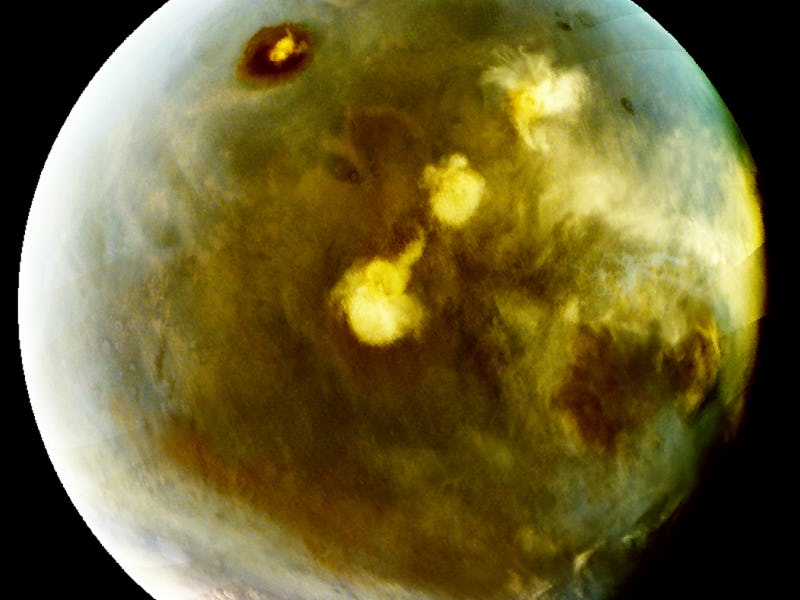We already know that Mars’ surface is extremely toxic, but a recent solar event may have made it even more unwelcoming to life.
NASA announced Friday that a coronal mass ejection from the Sun on September 11 was so strong that charged particles caused a planet-wide aurora on Mars. According to team members of NASA’s Mars Atmosphere and Volatile Evolution (MAVEN) mission, the solar event caused the entirety of Mars to light up in ultra-violet light. The aurora was also 25 times brighter than any event seen by the MAVEN orbiter thus far. The orbiter has been studying the atmosphere of Mars since 2014.
“An aurora on Mars can envelope the entire planet because Mars has no strong magnetic field like Earth’s to concentrate the aurora near polar regions,” says Sonal Jain, a member of MAVEN’s imaging ultraviolet spectrograph instrument team. “The energetic particles from the Sun also can be absorbed by the upper atmosphere, increasing its temperature and causing it to swell up.”
These images from NASA's MAVEN orbiter show the appearance of an aurora on Mars following the solar storm. The purple-white colors shows the intensity of ultraviolet light on Mars' night side before (left) and during (right) the event.
The aurora also produced seriously high radiation levels on Mars’ surface, according to readings by NASA’s Curiosity rover. For a little over two days, Curiosity’s Radiation Assessment Detector measured that radiation levels were more than double anything it had ever previously measured. Curiosity has been puttering around Mars since 2012.
Elon Musk announced Friday during a presentation at the International Astronautical Congress in Adelaide, Australia that SpaceX plans to start sending humans to Mars by 2024. Musk might want to take these solar developments into consideration before signing off on those first trips to the red planet.
According to a NASA, the solar event could have an impact on the habitability of Mars for humans.
Highly energetic solar events can significantly increase the radiation that penetrates through the atmosphere to the Mars surface. The increased radiation also interacts with the atmosphere to produce additional, secondary particles, which need to be understood and shielded against to ensure the safety of future human explorers.
The MAVEN team say they’ve only just started to analyze the data received from the solar event, so there could be more news to come. During his presentation Friday, Musk said that any rockets going to Mars will have a designated shelter for radiation from solar storms. Perhaps the data gathered by MAVEN can help.
If you liked this article, check out this video on scientists proving that microbes could survive on Mars.
